Discover 35 hidden attractions, cool sights, and unusual things to do in Brussels (Belgium). Don't miss out on these must-see attractions: Stoclet Palace, Gaasbeek Castle, and Horta Museum. Also, be sure to include Botanical Garden of Brussels in your itinerary.
Below, you can find the list of the most amazing places you should visit in Brussels (Bruxelles).
Table of Contents
Stoclet Palace
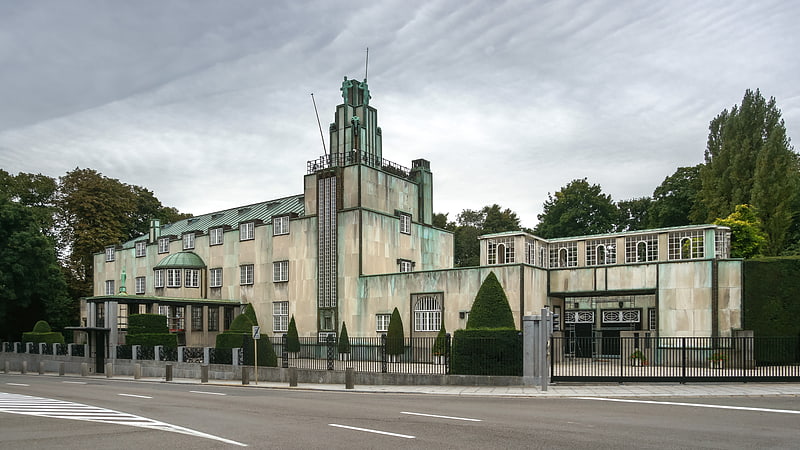
Also known as: Palais Stoclet
Mansion in Woluwe-Saint-Pierre, Belgium. The Stoclet Palace is a mansion in Brussels, Belgium. It was designed by the Austrian architect Josef Hoffmann for the Belgian financier Adolphe Stoclet. Built between 1905 and 1911 in the Vienna Secession style, it is located at 279–281, Avenue de Tervueren/Tervurenlaan, in the Woluwe-Saint-Pierre municipality of Brussels. Considered Hoffman's masterpiece, the residence is one of the 20th century's most refined and luxurious private houses.
The sumptuous dining and music rooms of the Stoclet Palace exemplified the theatrical spaces of the Gesamtkunstwerk ("total work of art"), celebrating sight, sound, and taste in a symphony of sensual harmonies that paralleled the operas of Richard Wagner, from whom the concept originated. In his designs for the Stoclet Palace, Hoffmann was particularly attuned to fashion and to the Viennese identity of the new style of interior, even designing a dress for Madame Stoclet so that she would not clash with her living room decor as she had while wearing a French Paul Poiret gown.
The mansion is occupied by the Stoclet family and is not open to visitors. The building has received protected status by the Monuments and Sites Directorate of the Brussels-Capital Region, and it was designated as a World Heritage Site by UNESCO in June 2009.[1]
Address: Avenue de Tervueren 279-281, 1150 Woluwe-St-Pierre (Woluwe-Saint-Pierre)
Gaasbeek Castle

Also known as: Château de Gaasbeek
Castle in Lennik, Belgium. Gaasbeek Castle, today a national museum, is located in the municipality of Lennik in the province of Flemish Brabant, Belgium.[2]
Address: Kasteelstraat 40, 1750 Lennik
Horta Museum
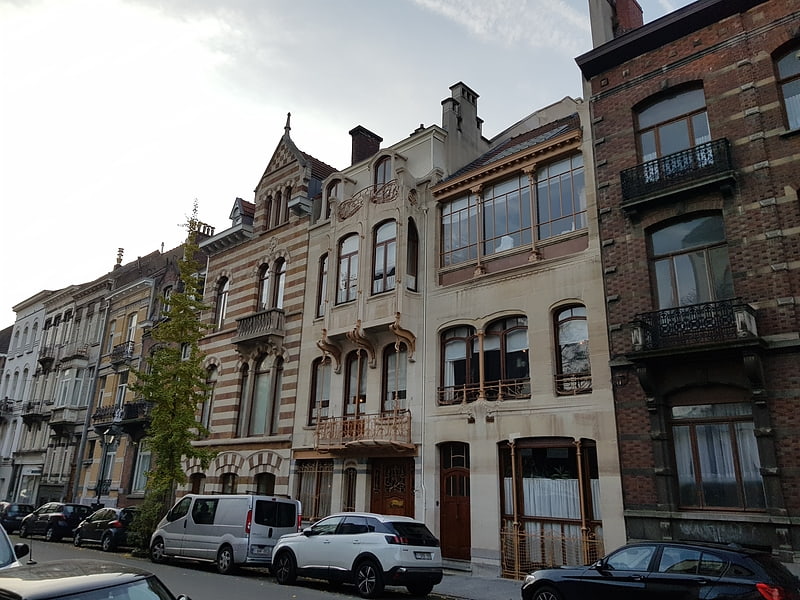
Also known as: Maison Horta
Museum in Saint-Gilles, Belgium. The Horta Museum is a museum dedicated to the life and work of the Belgian Art Nouveau architect Victor Horta and his time. The museum is housed in Horta's former house and workshop, Maison & Atelier Horta, in the Brussels municipality of Saint-Gilles.
Housed in the Art Nouveau interiors is a permanent display of furniture, utensils and art objects designed by Horta and his contemporaries as well as documents related to his life and time. The museum also organises temporary exhibitions on topics related to Horta and his art.
The building is inscribed on the UNESCO World Heritage List as one of the major town houses of Victor Horta in Brussels.[3]
Address: Rue Américaine 25, 1060 Bruxelles (Ixelles)
Botanical Garden of Brussels

Also known as: Jardin botanique de Bruxelles
Botanical garden in Saint-Josse-ten-Noode, Belgium. The Botanical Garden of Brussels stood on the Rue Royale/Koningsstraat in Saint-Josse-ten-Noode, near Brussels’ Northern Quarter financial district. The main building is now a cultural complex and music venue known as Le Botanique. It can be accessed from Botanique/Kruidtuin metro station on lines 2 and 6 of the Brussels Metro.[4]
Address: Boulevard du Jardin Botanique / Kruidtuinlaan, 1210 Brussel (Sint-Joost-ten-Node) (Saint-Josse)
Forest National
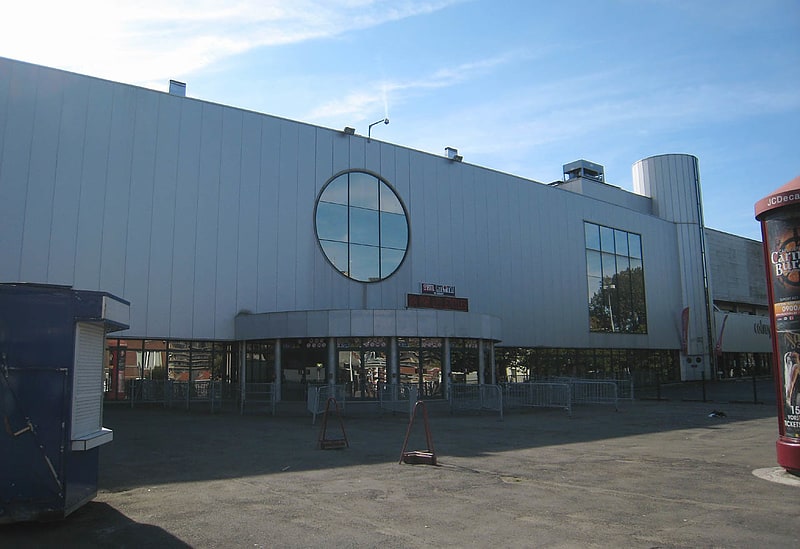
Arena in Forest, Belgium. Forest National is a multi-purpose arena located in the municipality of Forest near Brussels, Belgium. The arena can hold more than 8,000 people. It hosts indoor sporting events as well as concerts done by a wide variety of artists.
The arena, which opened in 1970, offers between 2,500 and 8,000 seats, depending on the event and is a member of European Arenas Association (EAA). Known for its circular interior, it is owned by the Music Hall Group and operated by the Sportpaleis Groep.[5]
Address: Brussels, Avenue Victor Rousseau 208, 1109 Forest, Belgium
Cauchie House
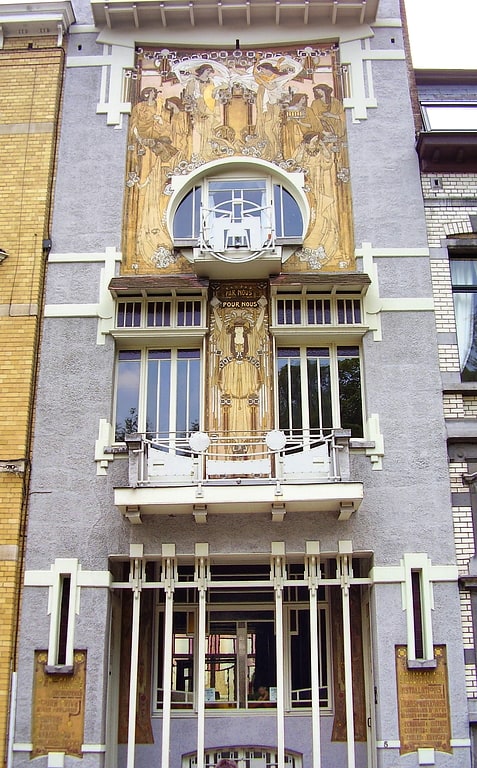
Also known as: Maison Cauchie
Art museum in Etterbeek, Belgium. The Cauchie House is a town house in Brussels, Belgium. It was built in 1905 by Art Nouveau architect, painter, and designer Paul Cauchie, in Etterbeek, next to the Parc du Cinquantenaire/Jubelpark. Its facade is remarkable for its allegorical sgraffiti.[6]
Address: Rue des Francs 5, 1040 Bruxelles (Etterbeek)
La Cambre Abbey
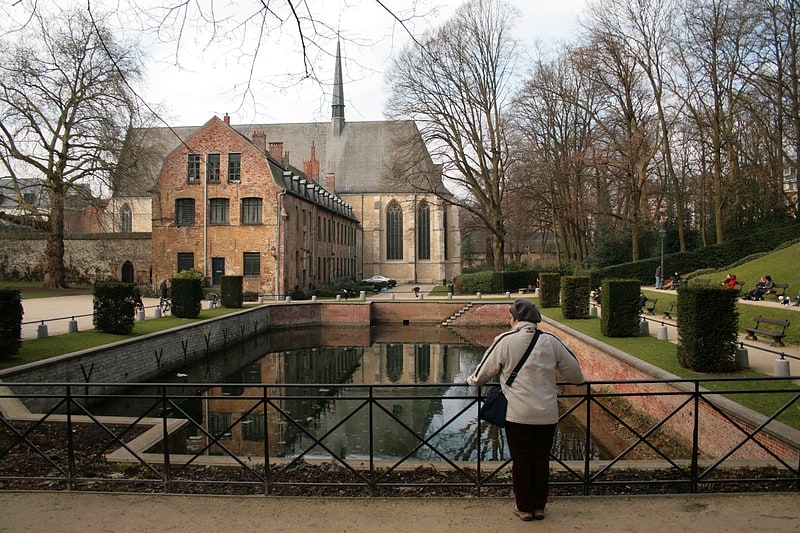
Also known as: Abbaye de la Cambre
Abbey in Ixelles, Belgium. La Cambre Abbey or Ter Kameren Abbey is a former Cistercian abbey in the City of Brussels. It is located in the Maelbeek valley between the Bois de la Cambre/Ter Kamerenbos and the Ixelles Ponds. The abbey church is a Catholic parish of the Archdiocese of Mechelen-Brussels and home to a community of Norbertine canons, while other parts of the monastery house the headquarters of the Belgian National Geographic Institute and La Cambre, a prestigious visual arts school.
The abbey was founded around 1196. It was suppressed during the French Revolution. Most of today's buildings date from the 18th century; only the church, the refectory and the wing of the capitular hall maintain their medieval character. The simple abbey church houses Albert Bouts' early 16th-century oil painting The Mocking of Christ.[7]
Address: Avenue Emile Duraylaan, 1050 Elsene (Bruxelles-Ville)
KANAL - Centre Pompidou
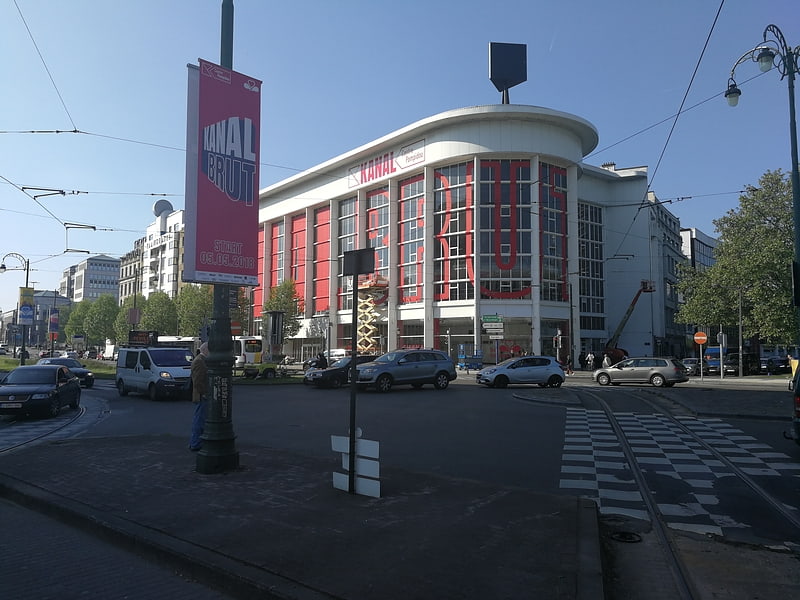
KANAL - Centre Pompidou is museum for modern and contemporary art located in Brussels, Belgium, near the Brussels–Charleroi Canal, in the former buildings of a Citroën garage. The definitive opening is scheduled for 2023.[8]
Address: Akenkaai, Brussels (Bruxelles-Ville)
Brussels Tram Museum
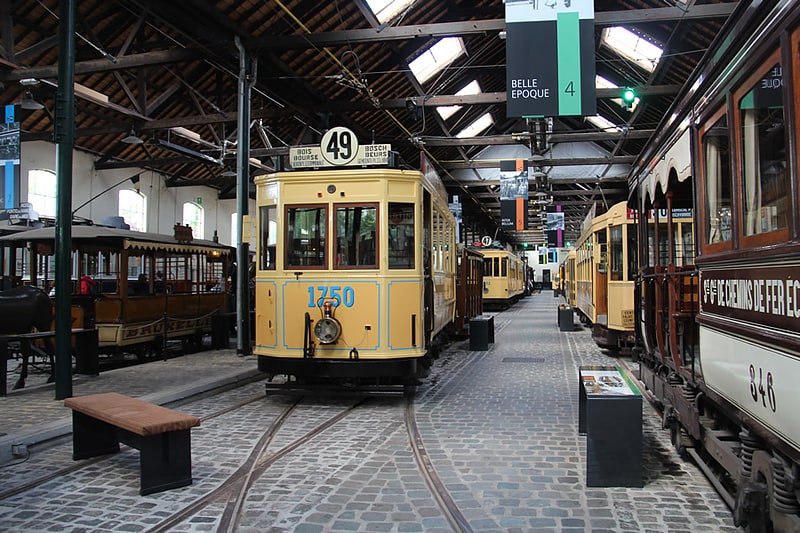
Also known as: Musée du transport urbain bruxellois
Museum in Woluwe-Saint-Pierre, Belgium. The Brussels Tram Museum, officially Musée du Transport Urbain Bruxellois or Museum voor het Stedelijk Vervoer te Brussel, is a transport museum located in an old tram depot in the municipality of Woluwe-Saint-Pierre, Brussels, Belgium. It displays a collection of trams and buses from different eras in the history of public transport in Brussels.
The museum is situated on the Avenue de Tervueren 364b opposite Woluwe Park.[9]
Address: Avenue de Tervueren 364b, 1150 Brussels (Woluwe-Saint-Pierre)
Erasmus House
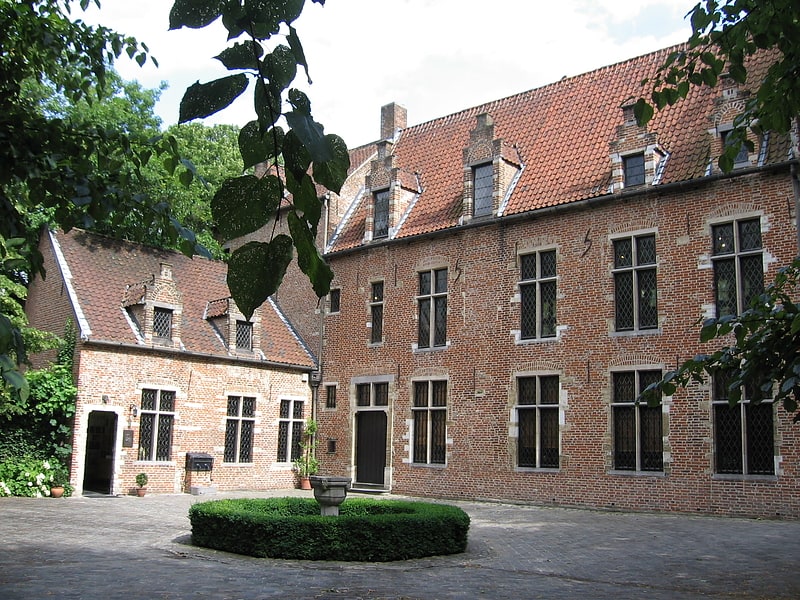
Also known as: Maison d'Érasme
Museum in Anderlecht, Belgium. The Erasmus House, also known as the Erasmus House Museum, is a museum in Anderlecht, a municipality of Brussels, Belgium, devoted to the Dutch humanist writer Erasmus of Rotterdam.
The house, of late Gothic or early Renaissance style, was built between 1460 and 1515 under the tutelage of Peter Wijchmans, canon and schoolmaster of the chapter of Anderlecht, and a friend of Erasmus. Erasmus stayed in the house for five months from May to October 1521, working on his translation of his Novum Testamentum from Greek into Latin.
The house was converted to a museum in 1931. Its garden is split into two parts that both try to adhere to the spirit of Erasmus; one through art and philosophy and the other, designed by the landscape architect René Pechère, through typical medicinal plants from the 16th century. The complex was designated a historic monument in 1938.
This site is served by Saint-Guidon/Sint-Guido metro station on line 5 of the Brussels Metro.[10]
Address: Rue de Formanoir 31, 1070 Anderlecht (Anderlecht)
Enclos des fusillés

The Enclosure of the executed is a small cemetery, located at the Rue Colonel Bourg in the Brussels municipality of Schaerbeek, where 365 resistance fighters of both world wars are buried.
The field of honour is located where the national shooting range previously was located. Nowadays, it lies on the plot of several media networks, including the Flemish Radio and Television Broadcasting Organisation and the Belgian Radio and television of the French Community, between the terrains of RTBF and the kindergarten of RTBF.
During the First World War, the shooting range was seized by the German forces who executed thirty-five people on the location, including Jozef Baeckelmans, Philippe Baucq, Louis Bril, Edith Cavell, and Gabrielle Petit. During the Second World War, 261 more people were executed by German soldiers, including Youra Livchitz, known for stopping a Holocaust train, saving dozens of Jews transported to Auschwitz concentration camp. After the war, the turf where they were buried was rebaptised to a memorial site.
Thirty-eight graves are of unknown individuals. A memorial commemorates the thirty-five executed individuals during the First World War. In 1970, another monument was established, honouring the unknown Belgian political prisoners of the Second World War. It exists of a high burial column and an urn with relics of victims of the concentration camps.
Every last Sunday of April, an official ceremony is organised honouring the prisoners of the concentration camps of the Second World War, in the presence of the highest dignitaries of Belgium.
The burial site is part of the protected immovable heritage of Schaerbeek since 12 January 1983.[11]
Address: Rue Colonel Bourg - Kolonel Bourgstraat, Brussels (Schaerbeek)
Basilica of the Sacred Heart
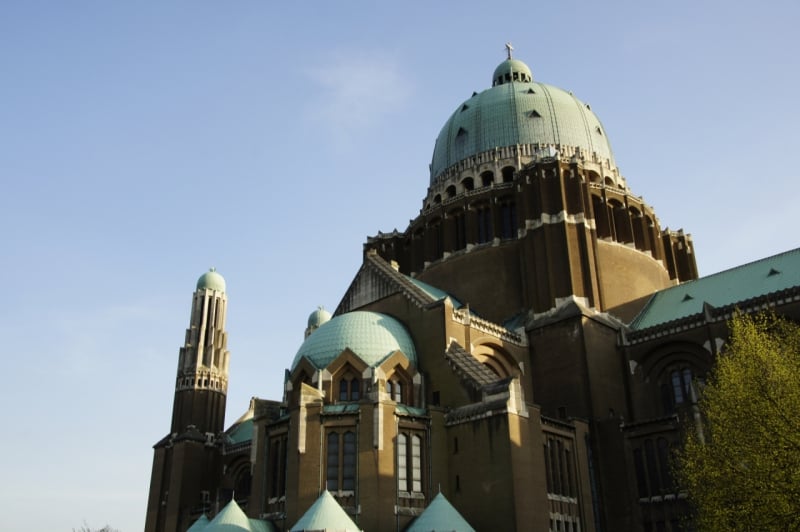
Also known as: Basilique du Sacré-Cœur de Bruxelles
Basilica in Ganshoren, Belgium. The National Basilica of the Sacred Heart is a Roman Catholic Minor Basilica and parish church in Brussels, Belgium. The church is dedicated to the Sacred Heart, inspired by the Basilique du Sacré-Coeur in Paris. Symbolically, King Leopold II laid the first stone of the basilica in 1905 during the celebrations of the 75th anniversary of Belgian Independence. The construction was halted by the two World Wars and finished only in 1969. Belonging to the Metropolitan Archdiocese of Mechelen–Brussels, it is one of the largest churches by area in the world.
Located in the Parc Elisabeth atop the Koekelberg hill at the border between Brussels' Koekelberg and Ganshoren municipalities, the church is popularly known as the Koekelberg Basilica (French: Basilique de Koekelberg, Dutch: Basiliek van Koekelberg). The massive brick and reinforced concrete church features two thin towers and a green copper dome that rises 89 metres (292 ft) above ground, dominating Brussels' north-western skyline. It is served by Simonis metro station on lines 2 and 6 of the Brussels Metro.[12]
Address: Parvis de la Basilique 1, 1081 Koekelberg (Koekelberg)
Museum David and Alice van Buuren

Also known as: Musée Alice et David van Buuren
Museum in Uccle, Belgium. The Museum David and Alice Van Buuren is a private house, now a museum, built from 1924 to 1928 for banker and art collector David Van Buuren and his wife Alice in Uccle, a municipality of Brussels, Belgium. The house was decorated by David and Alice as a total work of art to present their art collection in a rich Art Deco interior. The house is surrounded by gardens designed by Jules Buyssens in 1925 and René Pechère in 1968 and 1970. The private house became a museum in 1975 according to the testament of Alice Van Buuren. It was declared a National Heritage Site in 2001.[13]
Address: Brussels, Léo Errera Avenue 41
Le Botanique

Cultural center in Saint-Josse-ten-Noode, Belgium. Le Botanique or Kruidtuin is a cultural complex and music venue in Saint-Josse-ten-Noode, Brussels. The building was previously the main orangery of the National Botanic Garden of Belgium and even as part of the garden had hosted cultural events. In 1958, the National Botanic Garden of Belgium moved to Meise, outside of Brussels. Le Botanique opened in 1984, and the gardens in front are now the Botanical Garden of Brussels.[14]
Address: Rue Royale 236, 1210 Saint-Josse-ten-Noode (Bruxelles-Ville)
Parlamentarium
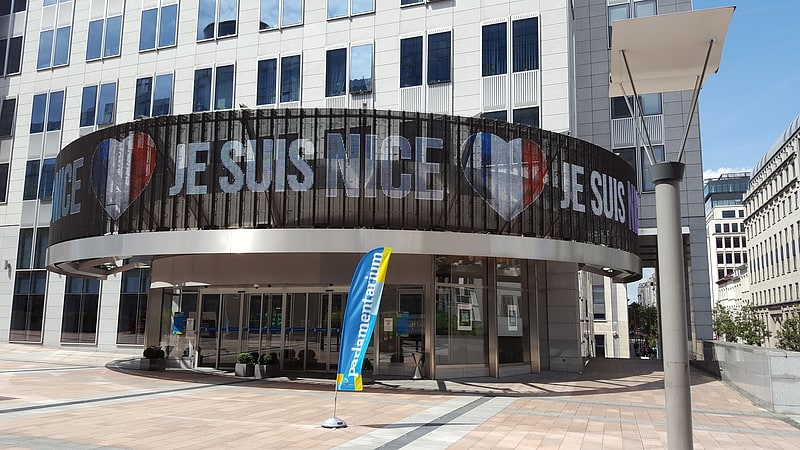
Museum in Ixelles, Belgium. The Parlamentarium is the visitors' centre of the European Parliament and is located in the Parliament's Espace Léopold complex in Brussels. The official opening was on 14 October 2011 by President of the European Parliament Jerzy Buzek. The permanent exhibition contains hundreds of multimedia components, explaining the European Parliament and other European Union institutions. The entrance to the centre is located on the Parliament's esplanade.
Each visitor is provided with a personal multimedia guide (PMG) which guides them through the exhibition, location is used to display content relevant to each area. All content in the Parlamentarium is available in the 24 official EU languages. Tours are held for children, blind and deaf people. The PMG is needed to activate each installation and shows in-depth information, plays audio using an in-ear speaker and displays short films in the visitor's selected language.
The Parlamentarium is open 7 days a week (closed Monday morning) and entry is free. Security is ensured by the use of airport style bag and visitor scanners at the entrance.[15]
Address: Rue Wiertzstraat 60, 1047 Brussel (Bruxelles-Ville)
Bibliotheca Wittockiana
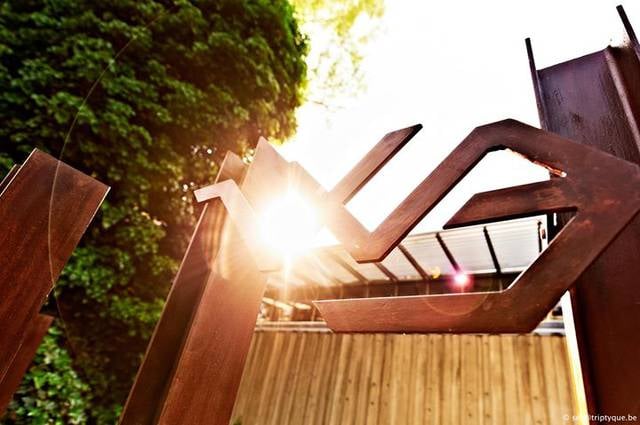
Museum in Woluwe-Saint-Pierre, Belgium. The Wittockiana is a public museum and library located in Brussels devoted to the arts of the book and of bookbinding.
The museum is based on the personal collection of Michel Wittock, a former entrepreneur and bibliophile, who donated his collection to the King Baudouin Fondation on 2010. The library was opened to the public in 1983. The Wittockiana is supported by the Fédération Wallonie-Bruxelles.
The museum reflects Wittock's interests and focuses on books and bookbindings dating back to the Renaissance to our time. Among others it holds an almost complete collection of the Almanach de Gotha, a collection of appr. 600 precious rattles (the former collection of Idès Cammaert), the archives of Valere Gille, a writer and influent personality in the literary world of the first half of the 20th century (whose office furniture is designed by Paul Hankar) and a part of the personal archive of Lucien Bonaparte.
The museum also hosts temporary exhibitions.[16]
Address: Rue du Bemel 23, 1150 Woluwe-Saint-Pierre (Woluwe-Saint-Pierre)
La Fonderie
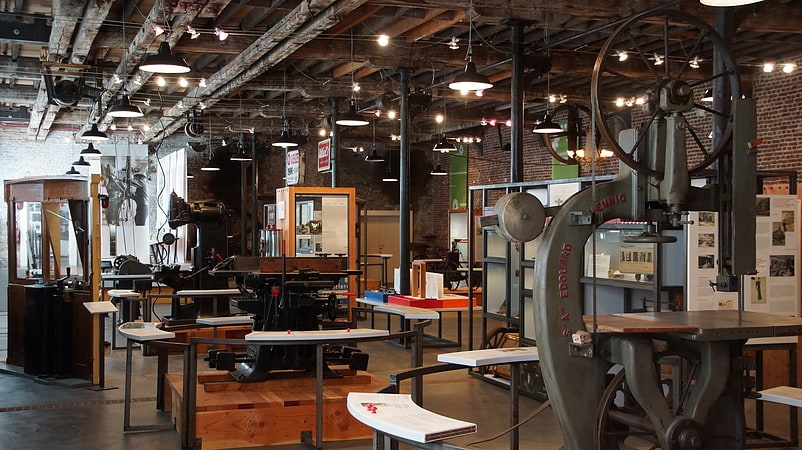
Also known as: Musée bruxellois de l'industrie et du travail
Museum in Sint-Jans-Molenbeek, Belgium. La Fonderie, Brussels Museum of Industry and Labour is a museum of industrial history in Brussels, Belgium. It collects objects, documents and oral history on the city’s industrial past and visualises the working history of Brussels.
The museum is located at 27, rue Ransfort/Ransfortstraat in Molenbeek-Saint-Jean, on the site of the former foundry of La Compagnie des Bronzes de Bruxelles (1854–1979), close to the Brussels–Charleroi Canal. It is managed as a nonprofit organisation focusing on analysing and exhibiting the economic and social history of the Brussels region. It publishes a magazine, organises guided tours and provides educational activities. La Fonderie also houses a documentation centre open to the public.[17]
Address: Rue Ransfort 27, 1080 Molenbeek-Saint-Jean (Molenbeek-Saint-Jean)
Josaphat Park
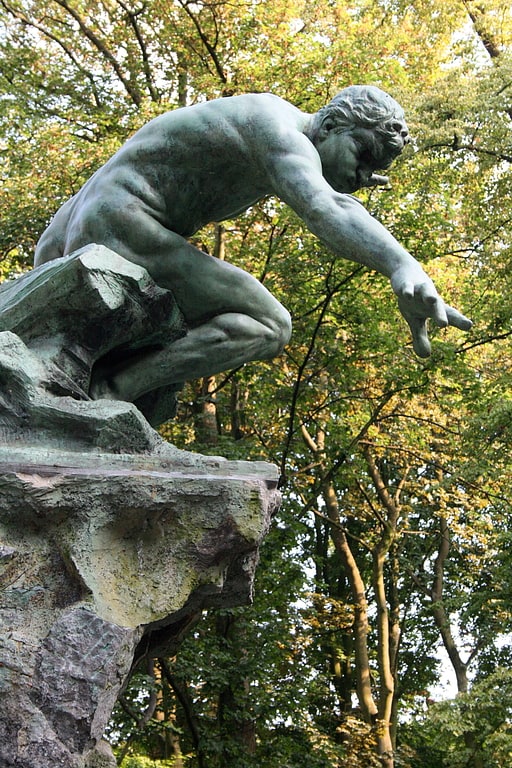
Also known as: Parc Josaphat
Park in Schaerbeek, Belgium. Josaphat Park is a public park of 20 hectares located in the municipality of Schaerbeek in Brussels, Belgium. The football stadium that was formerly used by the K.V.V. Crossing Elewijt lies on the north-west corner of the park. There is also an elementary school, a tennis club, the communal greenhouses, animals, two playgrounds, a minigolf course, an archery range, three cafés, a kiosk, and some ponds.
The park is a remainder of the old Linthout forest that began at Dailly Square. It was designed by Edmond Galoppin of Melsbroek and inaugurated by King Leopold II of Belgium on 6 June 1904. Its name comes from the resemblance between the valley of the Roodebeek (a tributary of the Maalbeek) where the park is located and the Valley of Josaphat in the Holy Land, noted by a pilgrim back from Palestine in 1574. It was designated on 31 December 1974.[18]
Cantillon

Brasserie-Brouwerij Cantillon is a small Belgian traditional family brewery based in Anderlecht, Brussels. Cantillon was founded in 1900 and brews exclusively lambic beers.[19]
Address: Rue Gheude 56, 1070 Anderlecht (Anderlecht)
Wiels
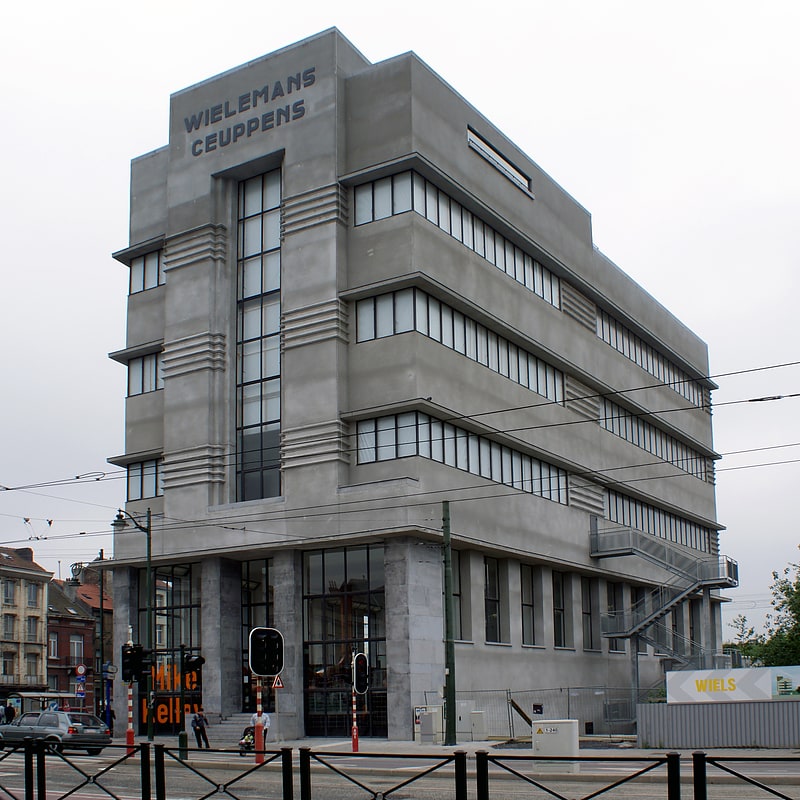
Museum in Forest, Belgium. Wiels is a contemporary art centre situated in Forest, in the Brussels Capital Region, Belgium in a former brewery. The centre opened in 2007. It has three exhibition platforms with a total exhibition space of 1,800 m2, an auditorium, studio workshops for artists-in-residence, and a café/foyer and bookshop in the former brewing hall. Wiels has no collection, instead putting on temporary exhibitions by national and international artists.
Wiels hosts nine artist-in-residency studios, for which it receives hundreds of applications every year.
For its tenth anniversary in 2017, Wiels organized a group exhibition called The Absent Museum, a reference to the incorrect assumption that Wiels is an art museum.[20]
Address: Avenue Van Volxemlaan 354, 1190 Vorst (Forest)
Beersel Castle
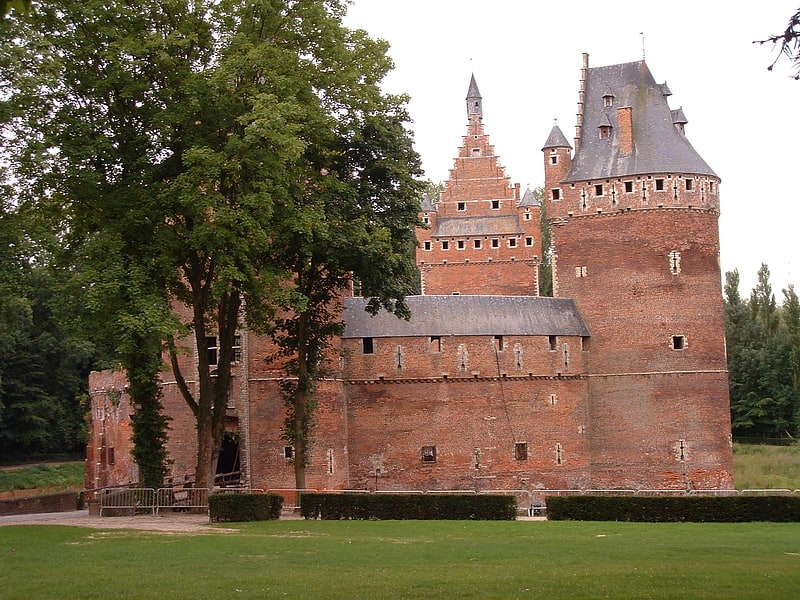
Also known as: Château de Beersel
Preserved medieval castle with 3 towers. Beersel Castle is a medieval castle located in Beersel, Flemish Brabant in Belgium. Originating in 1300 under the auspices of the Duchy of Brabant, the water castle's present configuration dates to 1357. It was twice sacked and was subject to significant restorations in 1491 and 1617. Its present condition owes much to a major restoration in 1928–39. Built largely of brick, a rare material for such buildings at the time, around a circular enceinte, its major feature is its three large towers. Today it is open to the public and is considered one of Belgium's best-preserved castles.[21]
Ixelles Ponds
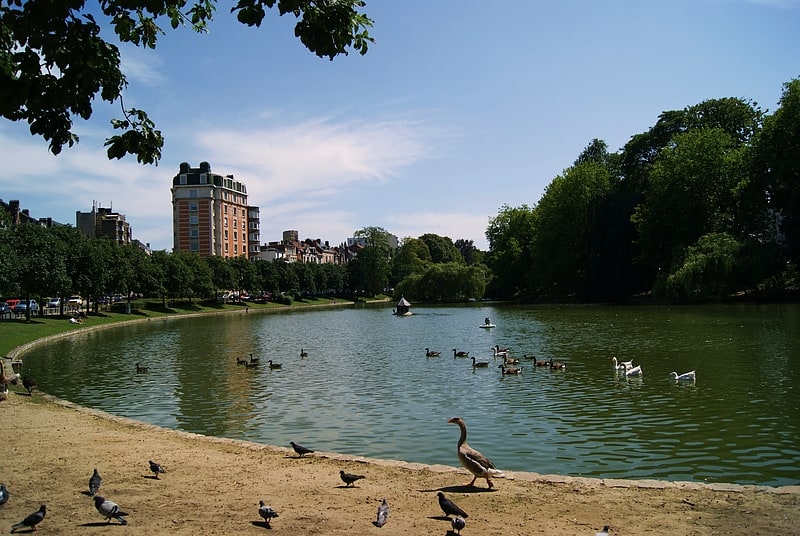
Also known as: Étangs d'Ixelles
Body of water. The Ixelles Ponds or Elsene Ponds are two freshwater ponds in the Brussels municipality of Ixelles. The ponds we can see today are those spared by a 19th-century campaign of drying the wetlands of the Maalbeek valley between La Cambre Abbey and Eugène Flagey Square.
The two long and narrow ponds, whose total lengths are approximately 700 metres (2,300 ft), and widths are approximately 50 metres (160 ft), are aligned on a roughly North-South axis and are separated by a narrow strip of land. With the surrounding park, the Ixelles Ponds are the tip of a long strip of almost uninterrupted greenery reaching all the way from the Sonian Forest deep into Brussels' urban tissue.
The ponds are an extremely popular recreation area for local residents pertaining to the Belgian upper-crust. However, in the late 1990s, the water was polluted with cyanobacteria. This is still the case with the boating lake in the nearby Bois de la Cambre/Ter Kamerenbos where signs are posted at regular intervals, warning of a risk of botulism. Fishing is allowed in the ponds on Wednesdays, Sundays and public holidays.[22]
Rouge-Cloître Abbey
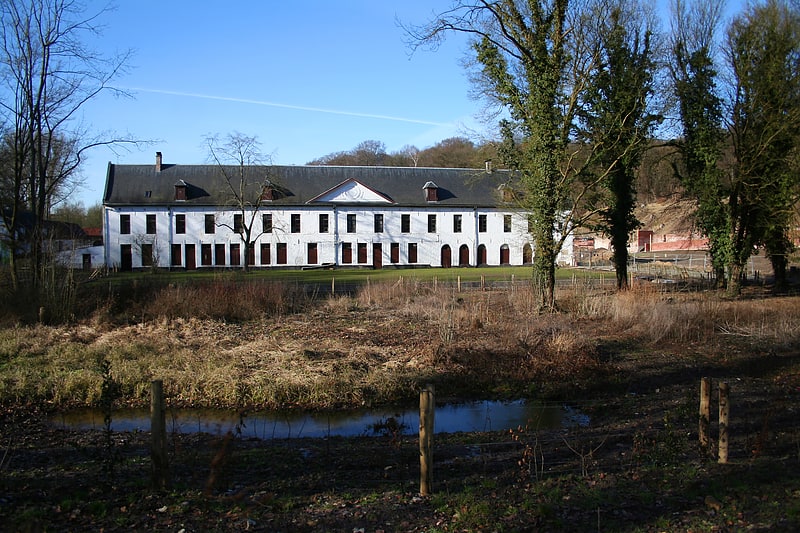
Also known as: Abbaye du Rouge-Cloître
Priory. Red Cloister is an Augustinian Priory, founded in 1367. It is located in the Sonian Forest, in south-eastern Brussels, Belgium. It was abolished in 1796. Today, it is administered from Auderghem, which is a commune of Brussels.
This area on the edge of the forest, surrounded by lakes through which the Roodkloosterbeek (Rouge-Cloître stream) passes, has been called the Rouge-Cloître estate from the 16th century until the present day. It was used for hunting in the 16th and 17th centuries and today is popular with nature-lovers and ramblers.[23]
Address: Rood-Kloosterstraat 4 Rue de Rouge-Cloître, 1160 Oudergem (Watermael-Boitsfort)
Het Goudblommeke in Papier
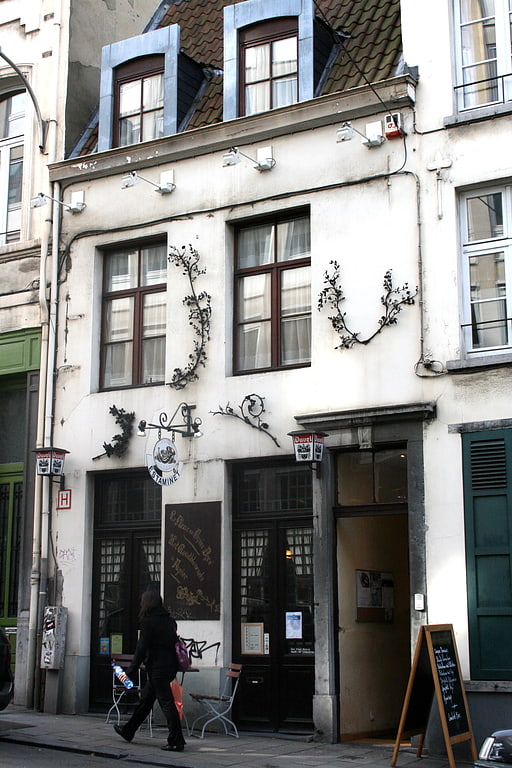
Het Goudblommeke in Papier or La Fleur en Papier doré is a historic café/brasserie established in 1944 at Cellebroersstraat 55 in Brussels.
The painter René Magritte, the novelist Louis Paul Boon, and the cartoonist Hergé were all at one time regulars. It was a meeting place for artists in the CoBrA movement, and in 1955 the writer Hugo Claus held his wedding reception there.
The café was registered as a protected monument in 1997. The building is owned by the Public Centre for Social Welfare of the city of Brussels, and partially sublet by AB InBev to the association that runs the café.
Since May 2011, the interior courtyard of the pub displays a comic strip fresco by the cartoonists De Marck and De Wulf (Stam et Pilou).
In January 2021 it was reported that the COVID-19 pandemic in Belgium had left the business's future precarious.[24]
Watermill Sint-Gertrudis-Pede
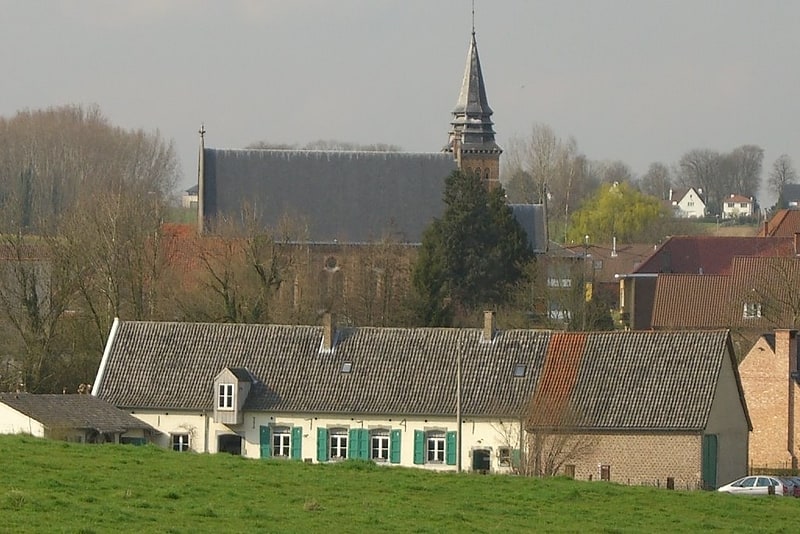
Tourist attraction in Dilbeek, Belgium. The watermill at Sint-Gertrudis-Pede in the municipality of Dilbeek is the only working watermill in the Pajottenland, and is protected as a monument since 1975[25]
Address: 84 Lostraat, Brussels
National Museum of the Resistance
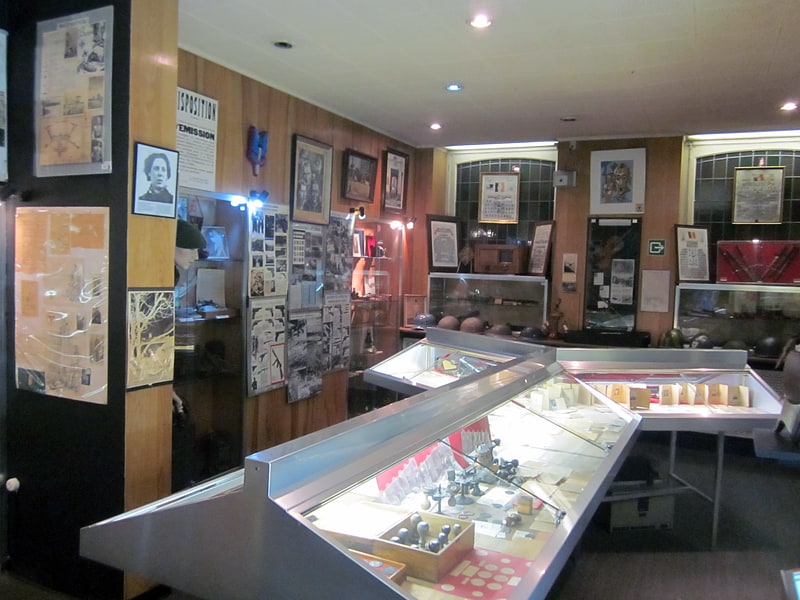
Museum in Anderlecht, Belgium. The National Museum of the Resistance is a museum located in the municipality of Anderlecht in Brussels, Belgium. The museum traces the history of the Belgian resistance and German occupation of Belgium during World War II. It is served by Clemenceau metro station on lines 2 and 6 of the Brussels metro.[26]
Address: Rue Van Lint 14, 1070 Anderlecht (Anderlecht)
Clockarium
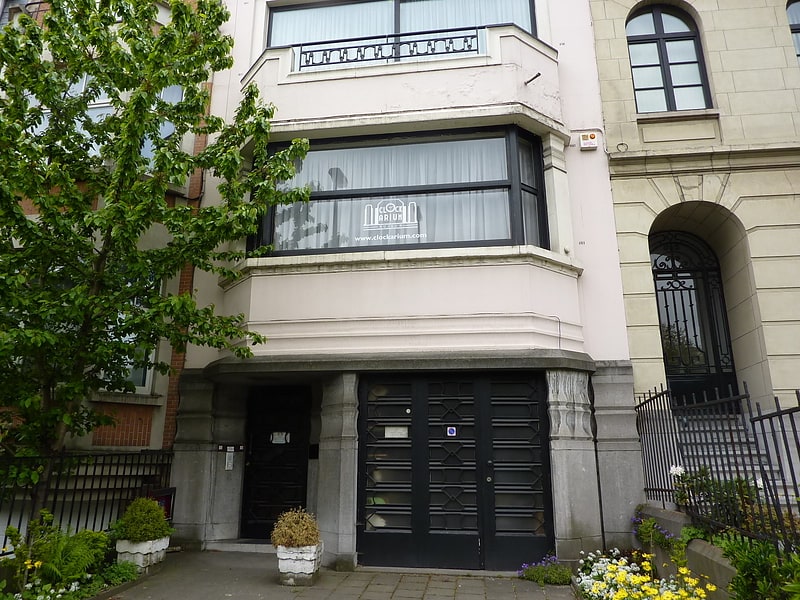
Museum in Schaerbeek, Belgium. The Clockarium is a museum in Schaerbeek, in the Brussels-Capital Region, Belgium, devoted to the Art Deco ceramic clock.
It specializes into the faience mantel clocks, which were the first timepiece affordable to everyone and proudly decorating many homes in Belgium and Northern France during the 1920s and 1930s. It is located on the Reyers boulevard in a stylish Art-Deco house built in 1935 by Belgian architect Gustave Bossuyt.[27]
Address: Boulevard Auguste Reyers 165, 1030 Schaerbeek (Schaerbeek)
Moulin Lindekemale
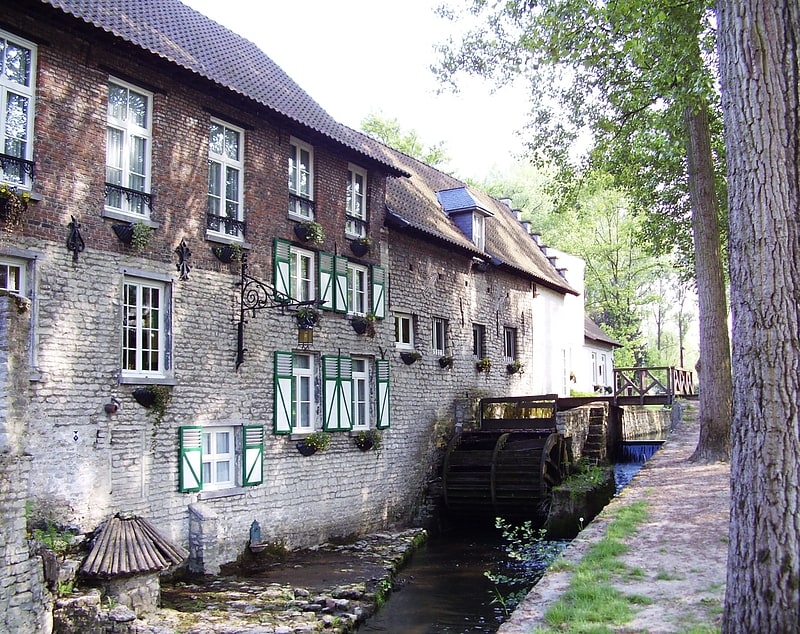
Also known as: Moulin de Lindekemale
The Lindekemale watermill is a 12th-century watermill at the north side of the Park Malou in Brussels, Belgium, currently operating as a restaurant.[28]
Address: Avenue Jean-François Debecker 6, 1200 Woluwe-Saint-Lambert (Woluwe-Saint-Lambert)
Château Malou

Building in Woluwe-Saint-Lambert, Belgium. The Château Malou is a neoclassical building in the municipality of Woluwe-Saint-Lambert in Brussels, Belgium. The Château Malou is situated at an altitude of 52 metres.[29]
Address: Mont Saint-Lambert 5, Brussels (Woluwe-Saint-Pierre)
Proximus
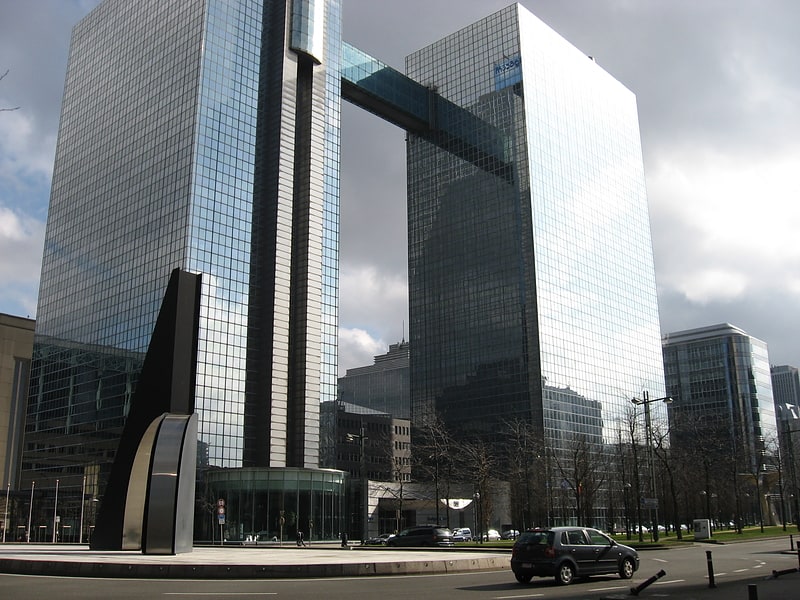
Building complex in Belgium. The Proximus Towers are twin skyscrapers on King Albert II Street in the Northern Quarter central business district of Brussels, Belgium. The buildings take their name from the telecommunications company Proximus. They are among the tallest buildings in Belgium.
The towers are both 102 metres (335 ft) tall to the roof, and Tower 1 has a spire reaching 134 metres (440 ft) high with a Belgian flag mounted on top. The two towers are linked by a 30 m long glass skyway between the 25th and 26th floors of each building.
The towers were originally conceived as part of an eight-building Brussels World Trade Center complex, but were splintered off into a separate project. The construction of the towers began in 1991 and was completed in 1994.[30]
Address: 27, Boulevard Roi Albert II, Brussels (Bruxelles-Ville)
Stade Joseph Marien
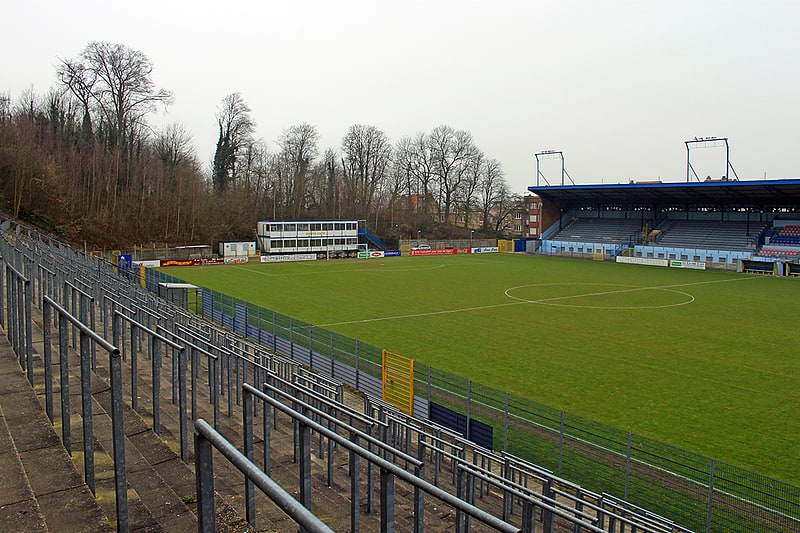
Also known as: Stade Joseph-Marien
Stadium in Forest, Belgium. Stade Joseph Marien is a multi-use stadium in Brussels, Belgium. It is currently used mostly for football matches and is the home ground of Royale Union Saint-Gilloise. The stadium holds 9,400 since 2018 and was opened in 1919. It is located within the Duden Park in the municipality of Forest, and its entrance is at one end of the Rue du Stade.[31]
Address: Chaussee de Bruxelles 223, 1190 Forest (Forest)
Marollen
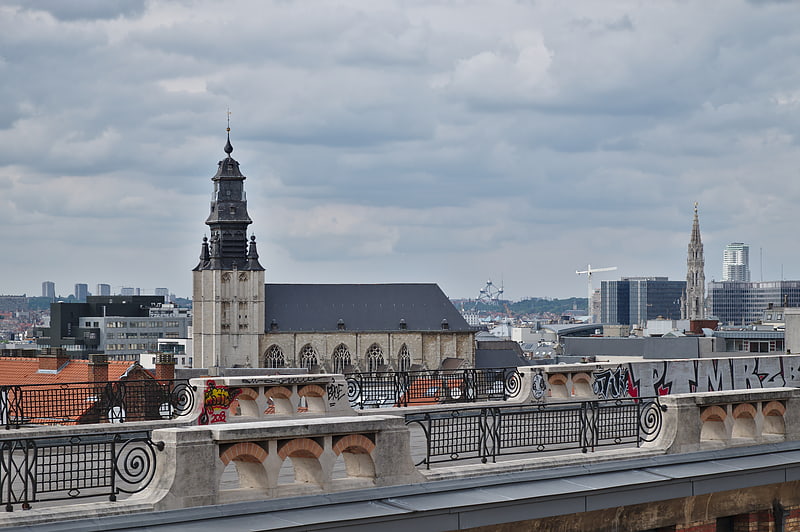
Neighbourhood in the City of Brussels, Belgium. The Marolles or Marollen is a popular historic neighbourhood of downtown Brussels, Belgium, situated between the Palace of Justice and Brussels-South railway station. Its inhabitants are called Marolliens.
Lying at the heart of Marolles are the Chapel Church and the Place du Jeu de Balle/Vossenplein. Major arteries of the district include the Rue Haute/Hoogstraat, the Rue Blaes/Blaesstraat and the Rue des Tanneurs/Huidevetterstraat. This area is served by Porte de Hal/Hallepoort metro station on lines 2 and 6 of the Brussels Metro.
The traditional Brabantian dialect of Brussels (known as Brusselian, and also sometimes referred to as Marols or Marollien) was widely spoken in the Marolles until the 20th century. It still survives among a small minority of inhabitants called Brusseleers (or Brusseleirs), many of them quite bi- and multilingual in French and Dutch.[32]
Saint Mary's Royal Church

Also known as: Église royale Sainte-Marie
Parish church in Schaerbeek, Belgium. Saint Mary's Royal Church is a Roman Catholic parish church located on the Place de la Reine/Koninginneplein in the Brussels municipality of Schaerbeek, Belgium. Officially dedicated to Our Lady of the Assumption, it is popularly associated with Queen Louise-Marie, first Queen of the Belgians, as is the square where it is located, which earned it the title of "Royal".
This site is served by the Botanique/Kruidtuin metro station on lines 2 and 6 of the Brussels Metro.[33]
Address: Place de la Reine - Koninginneplein, 1030, Schaerbeek - Schaarbeek, Brussels (Saint-Josse)
Château of Val-Duchesse

Also known as: Château de Val Duchesse
Conference center in Auderghem, Belgium. The Château of Val-Duchesse is a mansion and estate situated in the municipality of Auderghem in the Brussels-Capital Region of Belgium. The château, which occupies the site of a former priory, is owned by the Belgian Royal Trust.
Val-Duchesse played an important role as a venue for negotiations in Belgian and European politics after World War II. In 1956, Paul Henri Spaak led the Intergovernmental Conference on the Common Market and Euratom at the château, which prepared the Treaties of Rome in 1957 and the foundation of the European Economic Community and Euratom in 1958. The first formal meeting of the Hallstein Commission, the first European Commission, under the presidency of Walter Hallstein, was held on 16 January 1958 at the château.
From 23-25 April 1990, it hosted the Western European Union International Conference which agreed the sequence of accession of the Eastern European Countries of the former Warsaw Pact to European structures.
More recently, it has twice hosted the Belgo-British Conference, in 2002 and 2006.[34]
Address: 2 Avenue Valduchesse - Hertoginnedal, Brussels (Woluwe-Saint-Pierre)
Saint-Josse-ten-Noode Cemetery

Also known as: Cimetière de Saint-Josse-ten-Noode
Cemetery in Schaerbeek, Belgium. Saint-Josse-ten-Noode Cemetery is a cemetery belonging to the municipality of Saint-Josse-ten-Noode, Brussels, where the inhabitants of Saint-Josse have the right to be buried. It is not located in Saint-Josse itself, but in the neighbouring municipality of Schaerbeek.[35]
Address: 9 Rue Henri Chomé - Henri Choméstraat, Brussels (Schaerbeek)